JMM Insights: The Oldest Synagogues, Part II

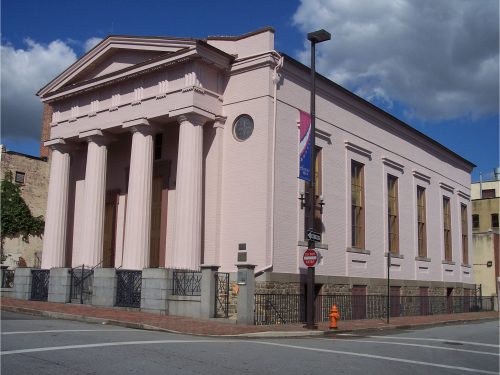
In addition to host Sheilah Kast, and historian Jonathan Sarna, the evening will also feature cantorial musical selections and Jewish hymns of the mid-19th century, performed by Cantor Robbie Solomon, as well as original recordings from the 1964 rededication ceremony of the synagogue. As Marvin pointed out in this Jmore article, “This ceremony hadn’t been heard in about 50 years,” said Pinkert. “It was Gil Sandler’s recording of Lester Levy and other Jewish leaders at the dedication.”
As promised in last week’s edition of JMM Insights, we’re back to explore more of the oldest synagogues from around the world. You may remember our recent Jewish Museums Around the World series where we virtually visited Jewish museums in England, South Africa, and Australia. I thought these would be the perfect “first stops” on today’s look at historic synagogues!
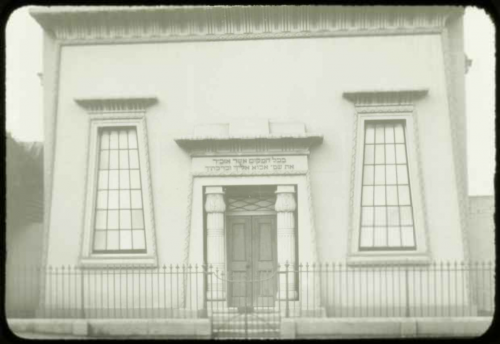
Starting in the Antipodes, did you know the oldest surviving synagogue building in Australia is the same age as the Lloyd Street Synagogue? Well, technically we’re just a smidge younger – the Hobart Synagogue in Tasmania was consecrated on July 4, 1845 and LSS was dedicated on September 26. While LSS is designed in the Greek revival style, the Hobart Synagogue was built in the Egyptian revival style. The carvings, inscriptions, and details of the building emphasized the story of Exodus which resonated strongly with the Jewish population of the time, many of whom had arrived in Australia as convicts who struggled to win their freedom. You can learn more about the Hobart Synagogue here.
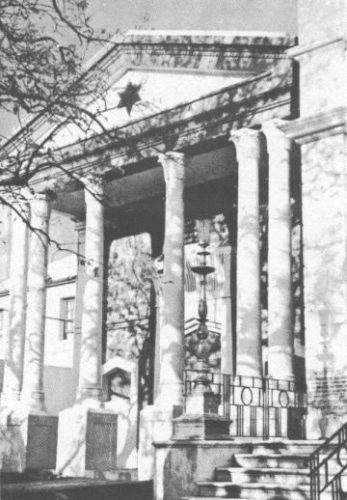
Moving westward across the water we head to South Africa – Cape Town to be exact. There’s some similarities to us folks here at the Jewish Museum of Maryland as well – like the LSS, South Africa’s oldest purpose-built synagogue, St. John’s Street Synagogue, is part of the South African Jewish Museum campus, as is the Great Synagogue, which represents the oldest Jewish congregation in South Africa. I wonder how many other Jewish museums have two historic synagogues on their campuses? The St. John’s Street Synagogue, also know as the Old Synagogue, was consecration in 1863, and like the Hobart Synagogue of Australia, was built in the “Egyptian style.” You can take a virtual tour of the South African Jewish Museum here.
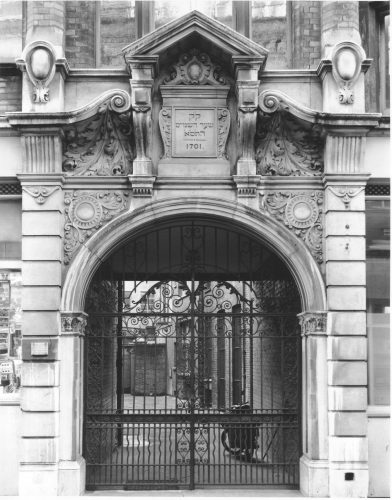
Heading north, let’s move to the United Kingdom. The oldest synagogue in continuous use is the Bevis Marks Synagogue, built in 1701 in London, England! The Bevis Marks Synagogue was established by a Sephardic congregation and was built by a Quaker, Joseph Avis. The interior of the synagogue was modeled on the 1677 Amsterdam synagogue and the exterior architecture is similar to other “non-conformist chapels” of the time (that is, different from the prevailing Anglican Church style). Learn more about the history of Bevis Marks – including its two brushes with explosive damage – here. You might also enjoy this Open University Exploring Religion in London video on the Bevis Marks Synagogue.
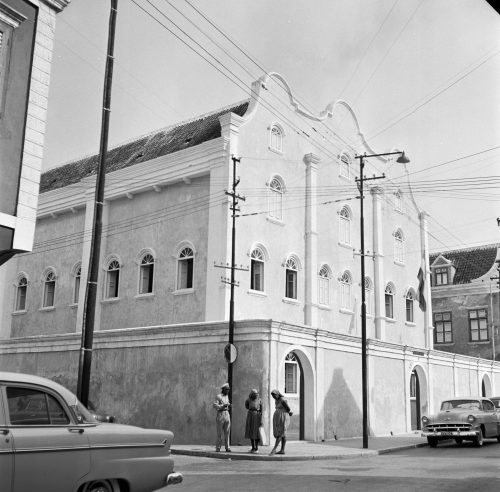
Let’s jump over to the “new” world for our next few stops. Our next destination was recommended by JMM Insights reader David W.: the Mikvé Israel-Emanuel Synagogue in Curaçao. Also known as the Snoa, this synagogue building was built in 1730 in the Dutch Colonial style. Similar to our own pink Lloyd Street Synagogue, the Curaçao Synagogue has a bright exterior – in their case a sunny yellow matching many of the surrounding buildings. Like the St. Thomas Synagogue, it also has a sand covered floor. Its interior is very similar to the Portuguese Synagogue in Amsterdam. Another connection to Baltimore, the “Monumental City”? Curaçao is known as an “Island of Monuments,” with over 860 protected monuments and historical sites!
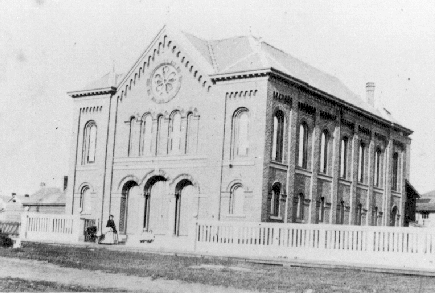
Traveling to cooler climes, lets’ check out Congregation Emanu-El, the oldest synagogue building still in use in Canada. Designed in the Romanesque Revival style by architect John Wright, the synagogue was built in 1863 with a town-wide gala celebrating the laying of the cornerstones in a surprisingly socially inclusive way. Once again, we find parallels to the history of our own Lloyd Street Synagogue. To protect the building during an early-20th century decline, windows were blocked, the original exterior was covered with stucco, and a false ceiling was installed. But starting in 1978, through the efforts of a group of volunteers (sound familiar?), the building was restored to its original appearance, a project completed in 1982.
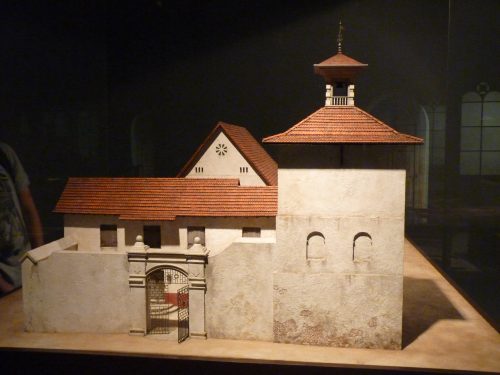
For our final two stops of this week we’ll head to the other side of the globe. Penultimate stop: India. The Paradesi Synagogue in South India is the oldest synagogue in India still in use (some older synagogue buildings still stand, including the Paravur Synagogue, built in 1615 ACE; the Chendamangalam Synagogue, built in 1614 ACE; and the Mala Synagogue, built in 1400, but like the Lloyd Street Synagogue serve as monuments and historic sites for visitors). The Paradesi Synagogue was built in 1568 and was built by Sephardic Jews. The land the synagogue is built on was given to the Jewish community by the Rajah of Cochin and was literally next to his palace. One interior feature of note are the hand-painted porcelain tiles that pave the floor!
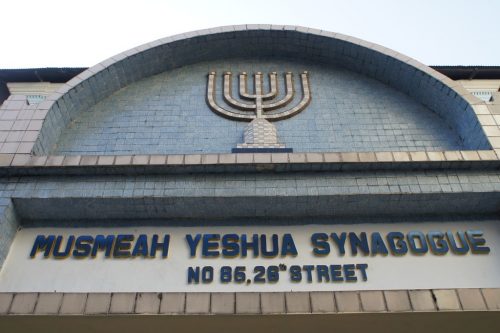
Our final destination in this edition of JMM Insights takes us to Myanmar (once known as Burma). The Musmeah Yeshua Synagogue is the oldest and only remaining synagogue in Myanmar. The current building replaced an original wooden structure in 1896. While the building was recently painted white, for most of its life it was sky-blue and pale yellow. At its peak, this synagogue housed 126 Torahs, but as the Jewish community left for new locales they took many with them, leaving only two remaining in the historic building. In 2008 the building lost its roof to Cyclone Nargis but thanks to funds by the US-ASEAN Business council, the building was restored and continues to be maintained as an important historic site and tourist destination.
I hope you’ve enjoyed this whirlwind tour of just some of the oldest synagogues around the world. Let us know if you’ve enjoyed this two-part series and would like to see future editions of JMM Insights on this topic.

